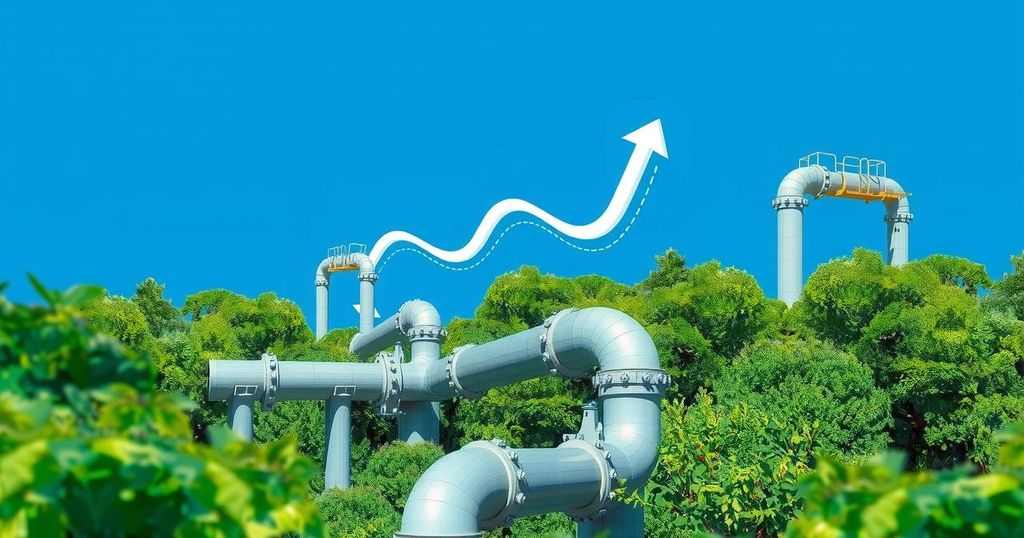Egypt’s Natural Gas Exports Resume Amid Increased Domestic Demand
Egypt has resumed natural gas exports amidst rising domestic energy demand, with expectations of the first shipment from Idku within a year. The country is contending with a significant drop in gas production, relying heavily on imports and facing challenges from increasing local consumption. Various sectors are experiencing mixed fortunes, indicating a complex economic landscape as Egypt aims for energy independence and strategic growth.
Egypt has recommenced natural gas exports to its liquefied natural gas (LNG) facilities in response to increasing domestic energy demand. Reports indicate improvements in supplies to manufacturing plants in Damietta and Idku, with the goal of exporting the first shipment from Idku within a year. Nonetheless, uncertainties linger concerning the timing and volume of these expected exports as Egypt faces challenges in balancing supply with domestic consumption.
During a recent press conference, Prime Minister Mostafa Madbouly acknowledged the pressure of surging local electricity demands, especially during the summer months, emphasizing that Egypt still relies on imports to meet these needs. Notably, Egypt’s gas production dropped significantly in 2024 to approximately 49.4 billion cubic meters from 59.3 billion cubic meters in 2023, as reported by the Joint Organization Data Initiative (JODI). The decline is attributed to aging fields and increased local consumption, leading to a halt in LNG exports since April 2024.
As production fell, Egypt increased gas imports by around 70%, totaling 14.6 billion cubic meters to stabilize its energy grid. Surprisingly, while imports surged, domestic gas consumption only grew modestly by about 1.1%, reaching 62.5 billion cubic meters. Furthermore, the government noted a reduction of $1.5 billion in petroleum imports every three months starting in January 2025, marking a decisive strategy to decrease foreign energy dependency.
Despite the energy challenges, various sectors in Egypt are still contributing to economic growth. For example, Audi, a prominent automotive manufacturer, reported a significant profit decline to €4.2 billion in 2024 and plans to reduce its workforce by 7,500 employees to save over €1 billion annually while aiming for an increased production of 4.2 million vehicles by the end of the year.
Conversely, Xiaomi experienced a remarkable increase in revenues, up 48.8% to $15.09 billion, driven by heightened interest in electric vehicles with expectations for further growth in 2025. Furthermore, Egyptian investment firm Hassana’s acquisition of a 40% stake in Birin Al-Mayah symbolizes a positive move within the water sector, demonstrating a broader trend toward market collaboration.
The current economic landscape in Egypt reflects both energy supply challenges and promising business developments. As the country prepares for another summer, officials remain optimistic about balancing import needs and production capabilities. Prime Minister Madbouly’s roadmap includes plans to resume LNG exports by March 2027, focusing on achieving energy independence while fulfilling local demand successfully.
In conclusion, Egypt is at a critical juncture as it strives to align its energy production with rising domestic consumption. The country’s approach to managing energy resources and fostering strategic partnerships across sectors will shape its economic future in the face of increasing global competition for energy. The successful implementation of these strategies and the proposed timeline for resuming LNG exports will be crucial in determining Egypt’s path forward.
Original Source: evrimagaci.org




Post Comment